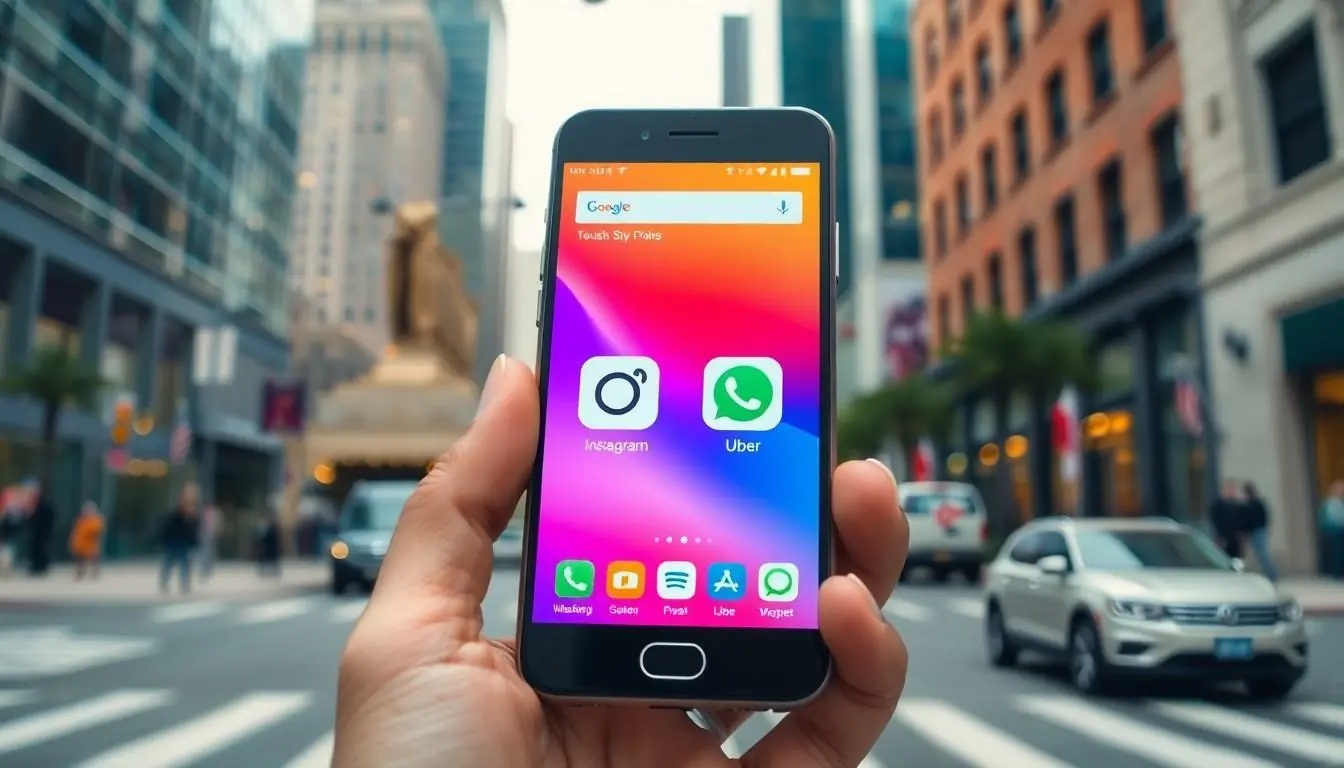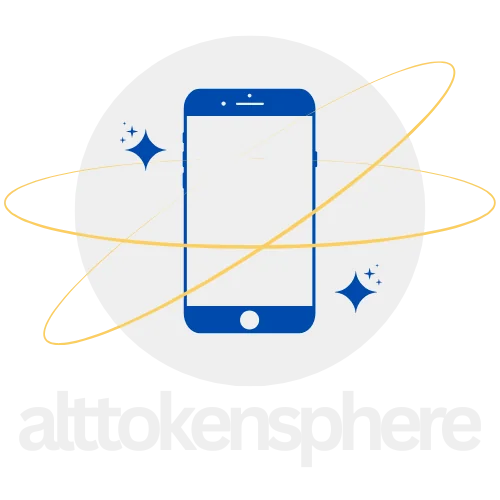Table of Contents
ToggleIn a world where smartphones have become an extension of ourselves, mobile apps are the magic wands that make our lives easier, funnier, and sometimes just plain weird. From ordering pizza in pajamas to tracking your daily steps while pretending to be a fitness guru, mobile apps come in all shapes and sizes. But what types of apps are out there?
Types of Mobile Apps With Examples
Mobile apps divide into several distinct categories based on their purpose and functionality. These categories deliver a variety of user experiences and serve specific needs.
- Native Apps
These apps build for specific platforms, such as iOS or Android. Popular examples include Instagram for social networking and Uber for ride-sharing.
- Web Apps
Accessible through web browsers, web apps adjust to different screen sizes. Examples include Google Docs for document editing and Twitter for microblogging.
- Hybrid Apps
Combining features of both native and web apps, hybrid apps utilize a single codebase for multiple platforms. Notable examples include WhatsApp for messaging and Airbnb for travel bookings.
- Gaming Apps
Dedicated to entertainment, gaming apps capture users’ attention with engaging content. Examples include Candy Crush Saga for puzzle gameplay and Fortnite for battle royale experiences.
- Utility Apps
Utility apps enhance productivity or offer essential functions. Popular examples include Evernote for note-taking and Microsoft Outlook for email management.
- E-commerce Apps
E-commerce apps facilitate online shopping, allowing users to browse and purchase items. Examples include Amazon for retail shopping and eBay for auctions.
- Entertainment Apps
Focused on providing media content, entertainment apps deliver music, videos, or live events. Examples include Netflix for streaming movies and Spotify for music discovery.
- Health and Fitness Apps
These apps help users monitor health metrics and manage workouts. Examples include MyFitnessPal for calorie tracking and Fitbit for activity monitoring.
Each type of mobile app plays a significant role in enhancing user experience and meeting specific needs in everyday life.
Native Apps

Native apps are designed specifically for one platform, providing users with a superior experience on their devices. They utilize system features and functionalities, resulting in faster performance and enhanced usability.
Characteristics of Native Apps
Native apps excel in speed as they are compiled into machine code. They offer seamless integration with device hardware, such as camera and GPS. Enhanced user experience features include push notifications and offline functionality. Access to platform-specific APIs allows native apps to take advantage of advanced device capabilities. Comprehensive UI elements ensure the app looks and feels familiar to users.
Popular Native Apps
Instagram captures photos and videos, offering users a social media platform to share visual content. Uber simplifies ride-hailing, connecting users with drivers seamlessly. Other examples include WhatsApp, which facilitates instant messaging, and Snapchat, enabling users to share stories. Popular gaming apps like Pokémon GO and Clash of Clans showcase native app capabilities in engaging formats. Each of these apps exemplifies how native design enhances user interactions.
Web Apps
Web apps function through a web browser and offer users the flexibility to access them from any device with an internet connection. These applications typically consist of client-side and server-side components, working together to deliver a seamless user experience.
Features of Web Apps
Web apps operate online, enabling easy updates without user intervention. Accessibility stands out, as users can access them anywhere, anytime. Responsive design allows these apps to adapt to various screen sizes, enhancing usability. They also rely on standard web technologies, like HTML, CSS, and JavaScript, which simplifies development. Offline capabilities exist for select web apps, improving functionality even without internet access.
Examples of Web Apps
Popular examples of web apps include Google Docs, which allows collaborative document editing in real time. Twitter serves as another example, offering social networking through a web-based interface. Facebook also operates as a web app, connecting billions of users with interactive features. Additionally, Canva provides design tools for creating graphics directly in a web browser. These examples illustrate the versatility of web apps in fulfilling diverse user needs across various domains.
Hybrid Apps
Hybrid apps combine elements of both native and web applications, providing a versatile approach to mobile development. These apps offer unique advantages, making them popular among developers and businesses.
Benefits of Hybrid Apps
Hybrid apps deliver a cost-effective solution for businesses aiming for multi-platform compatibility. They allow developers to write code once and deploy it across various platforms, saving time and resources. Performance remains solid since hybrid apps leverage device capabilities, offering near-native responsiveness. Users appreciate the seamless experience as hybrid apps can function offline, utilizing cached data. Maintenance becomes simpler with easy updates, ensuring that users always access the latest features.
Notable Hybrid Apps
Several hybrid apps illustrate the capabilities of this development approach. WhatsApp stands out for its efficient messaging and consistent performance across devices. Airbnb utilizes a hybrid framework to manage bookings and reviews, providing a smooth user experience. Other notable examples include Discord and Twitter, both designed to run efficiently on multiple platforms. Each of these apps leverages the benefits of hybrid development to enhance usability and accessibility for users globally.
Gaming Apps
Gaming apps occupy a prominent space in the mobile app landscape, offering entertainment and engagement to millions. These applications vary widely, catering to users’ interests and demographics.
Categories of Gaming Apps
Gaming apps can be divided into several core categories. Casual games appeal to broad audiences, with simple gameplay mechanics. Strategy games require critical thinking and planning, targeting players who enjoy more complex challenges. Action games provide adrenaline-pumping experiences, often featuring fast-paced gameplay. Role-playing games immerse players in storytelling, combining character development and quest completion. Lastly, educational games blend entertainment with learning, making them suitable for all ages.
Examples of Popular Gaming Apps
Numerous gaming apps capture attention and engagement. Candy Crush Saga stands out as a leader in casual gaming, attracting players with its addictive match-three mechanics. Fortnite revolutionized the battle royale genre, combining creative building elements and multiplayer action. Among strategy games, Clash of Clans has built a loyal user base through base-building and tactical battles. Pokémon GO utilizes augmented reality, encouraging players to explore the real world while capturing virtual creatures. Lastly, Minecraft offers a sandbox environment, enabling players to create and explore infinitely.
Mobile apps have transformed how people interact with technology and each other. With various types catering to specific needs and preferences, users can find solutions for everything from entertainment to productivity. Each category—native, web, hybrid, gaming, utility, e-commerce, entertainment, and health—offers unique advantages that enhance the overall user experience.
As mobile technology continues to evolve, the diversity in app types will likely expand, further enriching daily life. Embracing these innovations can lead to greater convenience and engagement in both personal and professional spheres. The future of mobile apps looks promising, with endless possibilities for developers and users alike.







